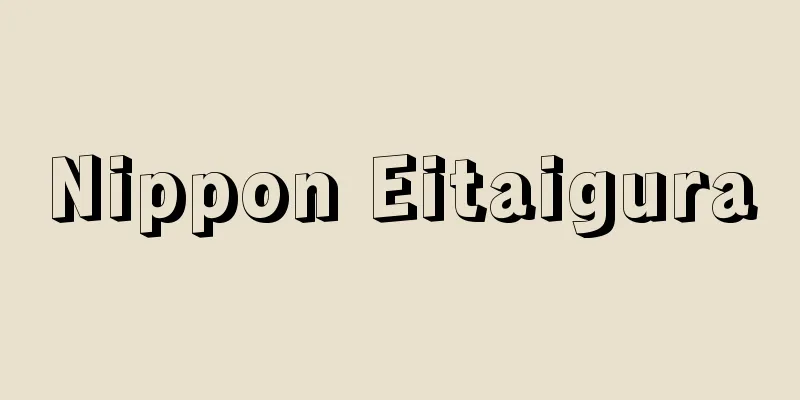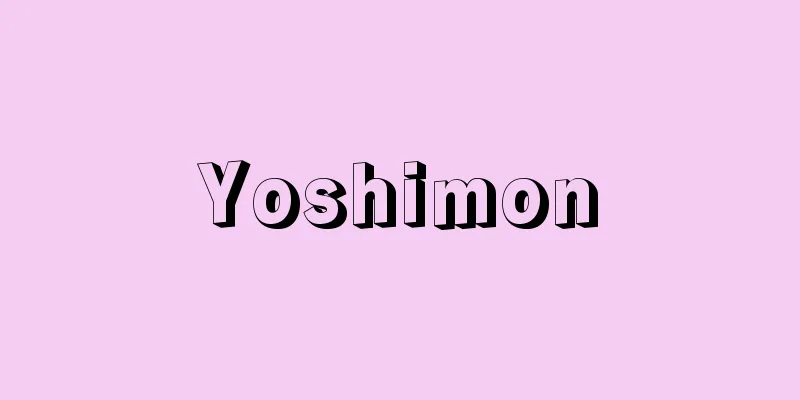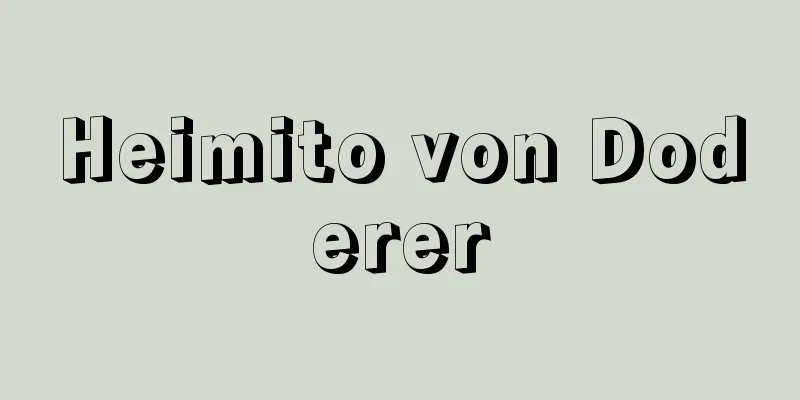Nippon Eitaigura

|
Ihara Saikaku's Ukiyo-zoshi. Published in January 1688 (Jokyo 5) under the joint name of the Three Capital Books Company: Morita Shoutarou in Osaka, Kanaya Chobei in Kyoto, and Nishimura Baifūken in Edo. Six volumes and six books. As the subtitle "Daifuku New Chojakyo" (New Rich Man's Teaching) suggests, it is a collection of 30 stories about townspeople's rise to wealth or poverty, following on from the kana-zoshi Chojakyo (1627), and was Saikaku's first work of townspeople stories. There are real-life models for these characters, such as Mitsui Hachiroemon (vol. 1-4), Fujiya Ichibei (vol. 2-1), the wealthy Sakata merchant Abumi-ya Sozaemon (vol. 2-5), Moritayama Yanosuke Ujisada of Bungo (vol. 3-2), Benizomeya Kikyouya Jinzaburo of Kyoto (vol. 4-1), and Sanmojiya Tsunemasa of Edo (vol. 6-2). The novel vividly depicts the emerging townspeople who built up huge assets through their proactive business acumen, making full use of their wisdom and talent, or through their strong will to be frugal and restrain their desires. In it, he succeeds in beautifully depicting the contradiction between the obsession with money and human nature, as well as the vicissitudes of a man bewitched by the magic of gold and silver. Examples include the protagonist Chusuke the kimono shop owner in volume 3, item 5, and Toshisuke Kobashi in volume 4, item 5. The work portrays the light and shadow of townspeople struggling in a turbulent economic life, some of whom prospered and others fell into poverty, with deep sentiment for humanity, such as "there is no man more wise and yet more foolish than man" (volume 5, item 2), and approaches the reality of the human world in which there is no right or wrong between rich and poor. After many editions, the work was republished in 1824 (Bunsei 7) under the title "Daifuku Shinchoja Kagami" and became a best-seller throughout the Edo period. [Akira Asano] "Noma Mitsutatsu's annotated translation of "Japanese Classical Literature Series 48: Saikaku Collection Vol. 2" (1960, Iwanami Shoten)" ▽ "Taniwaki Masashi's annotated translation of "Complete Translation of Japanese Classics 52: Nihon Eitaizora" (1983, Shogakukan)" Volume 5 by Ihara Saikaku, published in 1688 (Jokyo 5), held at the National Diet Library "Japan Eitaigura" Source: Shogakukan Encyclopedia Nipponica About Encyclopedia Nipponica Information | Legend |
|
井原西鶴(さいかく)の浮世草子。1688年(貞享5)1月、大坂・森田庄太郎、京都・金屋長兵衛、江戸・西村梅風軒の三都書林が連名して刊行。6巻6冊。副題に「大福新長者教(ちょうじゃきょう)」とあるように仮名草子『長者教』(1627)を受けて、町人の致富または貧窮の話30編を集め、西鶴町人物の第一作となったものである。三井八郎右衛門(巻1の4)、藤屋市兵衛(巻2の1)、酒田の豪商鐙屋惣左衛門(あぶみやそうざえもん)(巻2の5)、豊後(ぶんご)府内の守田山弥之助(もりたさんやのすけ)氏定(巻3の2)、京都の紅染屋(べにぞめや)桔梗屋(ききょうや)甚三郎(巻4の1)、江戸の三文字屋常貞(じょうてい)(巻6の2)など、実在のモデルを指摘することができる。知恵、才覚を縦横に働かせた積極的な商魂によって、あるいはまた欲望を自制する始末倹約の強固な意志力によって、それぞれに巨大な資産をつくりあげた新興町人群像が生き生きと描かれている。このなかで、金銭に対する執着と人間性との矛盾相克の姿、あるいは金銀の魔力に取り憑(つ)かれた人間がたどる転変たる生涯をもみごとに形象化することに成功している。巻3の5の主人公呉服屋忠助や巻4の5の小橋の利助たちがそれである。激烈な経済生活のなかで悪戦苦闘して、あるいは富み栄え、あるいは貧窮没落する町人群像の光と影を、「人程賢て愚なる者はなし」(巻5の2)といった人間に寄せる深い感慨とともに大観し、貧富二様の是非もない人の世の実体に迫った作品である。版を重ね、1824年(文政7)には『大福新長者鑑(かがみ)』と改題出版され、江戸時代を通じたベストセラーとなっている。 [浅野 晃] 『野間光辰校注『日本古典文学大系 48 西鶴集 下』(1960・岩波書店)』▽『谷脇理史校注・訳『完訳日本の古典 52 日本永代蔵』(1983・小学館)』 巻5 井原西鶴著 1688年(貞享5)刊国立国会図書館所蔵"> 『日本永代蔵』 出典 小学館 日本大百科全書(ニッポニカ)日本大百科全書(ニッポニカ)について 情報 | 凡例 |
<<: Japanese Swimming Style - Nihon Eiho
Recommend
abele spelen (English spelling) abele spelen
... In the Renaissance, Roman comedy was rediscov...
Ada
A programming language designed by the US Departme...
Pluto (mythology) (English spelling) Pluto
…His name means “the invisible one.” In Roman myt...
Keiko - Keiko
A Chinese writer from the Three Kingdoms Wei Dyna...
Number - Number
[1] [noun] ① A name indicating the order of things...
Ethylenimin
…Ethylenimine is also known as azacyclopropane. I...
Akinet - Akinet
…In mosses and vascular plants, they are simply c...
Enbu
This is a ritual performed at the beginning of a G...
Winston
A brand and product name of cigarettes manufacture...
Eblana
…The Phoenix Park in the west is home to the Pres...
Eirenriede - Eirenriede
…Urban forests can therefore be described as &quo...
Horned hat - Horned hat
〘Noun〙① A headgear made of isosceles triangular fa...
Psychobiology
Dynamic psychiatry was proposed and developed by A...
Takashina Naritada - Takashina Naritada
Year of death: 4.7 (998) Year of birth: Encho 1 (9...
Erythema infectiosum (Fifth disease)
What kind of infection is it? Erythema infectiosu...









